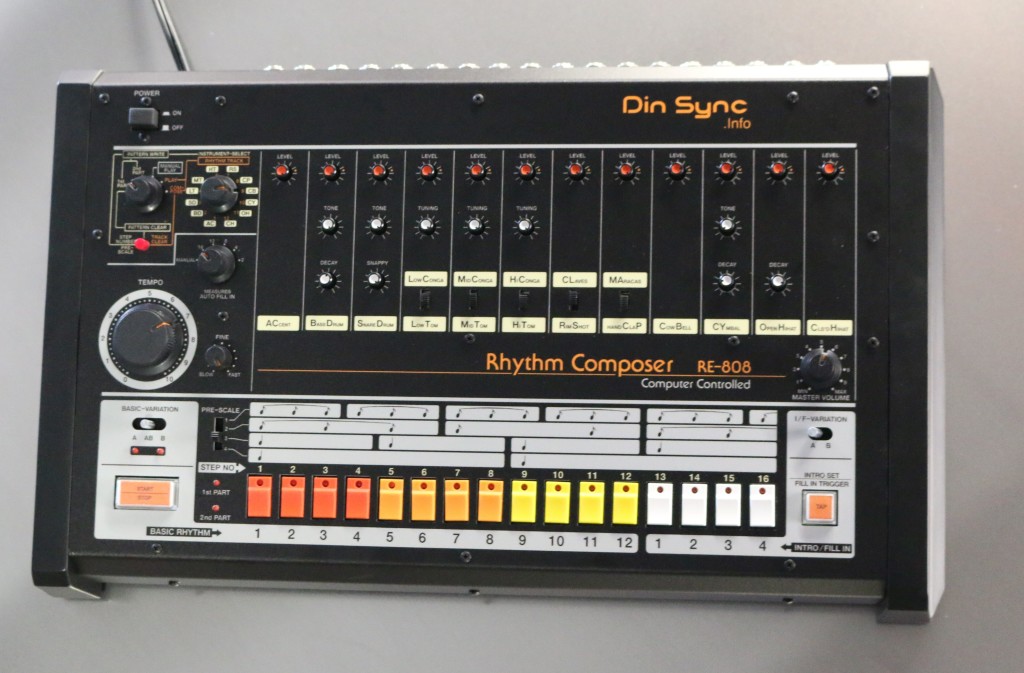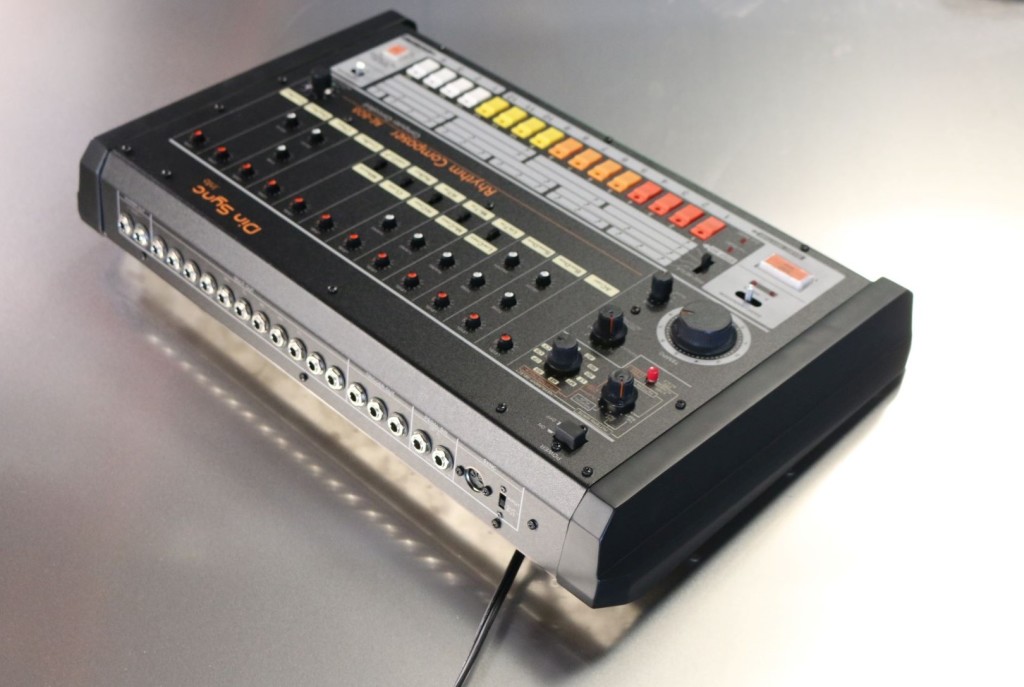It’s not a clone – DinSync.info have been so complete in their recreation of the TR-808, that the results will help actual 808 owners keep their units running far into the future. It’s the Ship of Theseus 808.
Since we are in some kind of golden age of clones and recreations, ranging from software models to hardware tributes, it’s worth actually breaking down what we mean. The 1980 Roland TR-808 was both digital and analog – it says so right on the front panel; the “Computer Controlled” bit being a clue.
So hardware remaking the 808 has derived ideas from the analog circuits of the 808, all of which are published and widely known. Some drum machines reproduce those circuits fairly accurately; others riff on them for their own variations, which gives us a wide variety from makers boutique and mass-market alike.

DinSync.info deserve special credit because they’ve created not only analog parts that are drop-in compatible with the TR-808, but even new digital parts to replace obsolete CPU and RAM chips.
So this business about it not being a clone isn’t marketing spin or my hype or something. It has real-world practical implications for owners of original TR-808 hardware. The sad truth is, for all the passion for vintage at the moment, a lot of the historical instruments are kind of, well… doomed. When an analog circuit breaks, you can go in and replace parts. But when digital components fail, the machine is effectively dead – you can’t fix a CPU with a soldering iron. And we are very much getting to the point where things from about 40 or so years ago – oops, ow, my back – are showing their age.
The magic of the RE-808 from DinSync then is the Pixie RE-CPU they’re using as the “digital decap” to replace the TR-808. It runs the same raw 808 code, so you’re running the original OS. It’s a fountain of youth for these digital-analog hybrid machines. And while all the parts from DinSync are useful, having a replacement those impossible-to-repair, soon impossible-to-find CPU and RAM chips is beautiful news for the 808s of the world.
Paul Barker of DinSync.info explains:
This is continued work from the RE-303/RE-606 as they both share the same core MaskROM CPU, but with different code space. We are the first to ever tackle this side of things, most machines in the past just clone from service documents, add features or rewrite the sequencer, etc. We dissect real machines and work from the hardware backward; there are often small errors in the service manuals of these machines that might not be so obvious but they exist and with our approach, you get the real analog thing with identical digital workflow and playback timing, to us this is key. Just one more piece in the puzzle.
Last year we did the RE-909 in this same way and this has been a runaway success and essentially enabled us to do the 808. We didn’t have to do much in the lines of the CPU on the 909 since the original doesn’t use a MaskROM (technically it does, but it’s set to external mode) and all the parts are essentially still available.
The news for 808 day is that the ambitious DIYers among you can also buy a bundle of all this stuff and make your own 808. It’ll be entirely new, but it will also be a part-by-part replica of the original. The DIY kit is literally a bundle of all the replacement parts DinSync makes.
It’s like a kit-built Ship of Theseus. (Hey, I can quote this metaphor now that it’s been on Wandavision and Marvel movies now, right? Practically mainstreamed. International readership, though, so see below.)
And it joins similar recreations, the RE-909 and RE-303, meaning DinSync have now completed the holy trinity of Roland boxes. It’s an impressive achievement from an engineering standpoint alone.
The parts bundle:
1pc PCB main board, TR-808 service part 7311613006 compatible
1pc PCB voice board, TR-808 service part 7311614001 compatible
1pc PCB switch board, TR-808 service part 7311609000 compatible
1pc PCB jack board A, TR-808 service part 7311610000 compatible
1pc PCB jack board B, TR-808 service part 7311611000 compatible
2pcs PCB spacers
1pc PCB safety psu board
22pcs Potentiometers with caps set (12 red, 10 white)
2pcs metal mounting brackets
1pc scale switch
1pc A/B toggle switch (3 pos)
1pc I/F toggle (2 pos)
5pcs Voice slide switch
1pc stepped tempo pot
18pcs 6.3mm jacks
16 pcs step caps with actuators (4 red, 4 orange, 4 yellow, 4 white)
1pc large knob (tempo)
4pcs medium knob (mode, instrument, auto-fill, volume)
1pc small knob (fine tempo)
*BONUS*
first 150 bundles come with an exclusive free early adopters 808 metal badge designed and made by Suddi Raval.****TIP****
don’t forget to order a pixieRECPU and BA662 for this build
That’ll cost you 4200 SEK (Swedish Kroner) so – just under US$500 bucks.
And you can see what I mean – this does not look like an 808; it’s a big bag o’ parts. (Your Ship of Theseus comes as a bunch of timber; some assembly required. Allen wrench or something.)
So you will need to know what you’re doing – or hire someone – to turn it into a usable drum machine.
There’s no case, so unless you want a naked 808, you then get your cases and side panels from their partner:
When you do get that case, you can construct something to look like this:

Anyway, since I brought it up, if you haven’t enjoyed the simple joys of this paradox, here are those wacky philosophers to tickle your brain:
Let’s see, we got the Trolley Problem on The Good Place and the Ship of Theseus on WandaVision, so basically we are finding out what Americans are doing with the liberal arts degrees we got all this debt with. I suppose you could use this same video clip to say the original, dirty, half-broken 808 is more real than the RE-808, but I leave that to you. Or maybe your RE-808 will turn evil and murder everyone. Something.